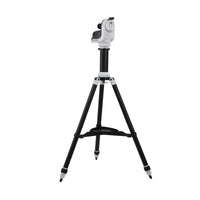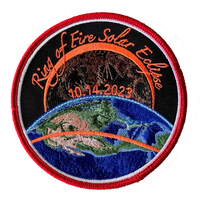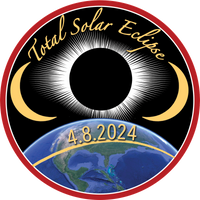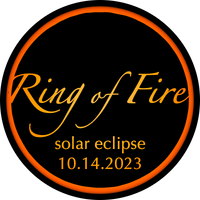
August 2018 Astronomy Calendar
Mars, Stars, & Meteors
August evenings begin with bright Venus in the west, followed by Jupiter, and Saturn in the southern sky. Following the July 27th opposition, Mars rises earlier each night, but begins to dim after about mid-August. As if to give Mars a send-off, the Perseid Meteor shower peaks in the pre-dawn morning hours of Sunday August 12th and Monday August 13th. The New Moon is Saturday, August 11th, meaning there will be no bright Moon to interfere with seeing the Perseids this year.
August 11 will also see a partial solar eclipse for parts of Europe, Asia, and Northern Canada. We won't be able to see any of this eclipse from the US.
Globular Clusters
Next to Mars this month, look for two globular clusters, M55, and M75. From city skies, these will appear as grey blobs in the telescope, but resolve into dense clusters of individual stars under darker skies.

M55 is about 17,300 lightyears distant, making it one of the nearest globular clusters to our own solar system, and contains roughly 100,000 stars spanning about 100 lightyears across. M55 can appear somewhat diffuse in binoculars, but is best seen in an 8" or larger telescope to resolve it as a true star cluster rather than a fuzzy nebula.
M75 is some 67,500 lightyears away, still within our Milky Way Galaxy, and also composed of some 100,000 stars. M75 is the fainter of the two as Mag 8.5.
August 11/12/13: Perseid Meteor Shower
The Perseids are typically one of the best meteor showers of the year. Like all meteor showers, the Perseids are named for the constellation where they appear or originate from - in this case, Perseus. The meteor shower occurs when the Earth passes through an area in its orbit where comet Swift-Tuttle also passed through, leaving a trail of dust from it's bright tail. That dust impacts the atmosphere and becomes the bright flashes of Meteors that we see as it burns up.

The best viewing for any meteor shower is under the darkest possible skies, well away from city lights. Just bring a blanket and pillow, and lay back on the grass and look up at the sky. The shower is expected to peak in the early morning hours, about 2:AM - 4:AM. Monday morning is expected to be the best time, but Sunday morning should also be quite good. The shower has been known to produce up to 150 meteors per hour, though it is more common to expect to see a meteor every minute or two from a dark site. Look towards the radiant to increase your chances for sightings.
Aug 20: Moon and Saturn Conjunction
While not as close together as last month, the Moon will swing within 3.5° of Saturn, putting the two inside the field of view of 10x50 binoculars.
Telescopic Challenge: Mars' Moons

Looking for a challenge? Mars has two small Moons, Phobos and Deimos. They are in a close orbit to Mars, and very dim compared to the Red Planet. Seeing them will require a 6" or larger telescope, and a bit of ingenuity to block out the bright disk of Mars itself. This involves creating your own occulting bar. See this article from Sky & Telescope to see how it's done.
The image above shows the alignment of Deimos, Phobos, and Mars as they will appear at 3:AM on July 31st. Refer to your own planetarium software to see the positions of the Moons throughout each evening. Phobos has a 7 hour and 39 minute orbital period, and Deimos has a 1 day, 6 hour, and 18 minute orbital period.
Manage to meet the challenge? Let us know in the comments!
Don't forget to join our newsletter for regular night sky updates!
All times unless otherwise indicated are Mountain Time. Sky charts were generated with Sky Safari Pro for an observer in Denver, Colorado.
Cover photo Image credit: NASA/JPL




